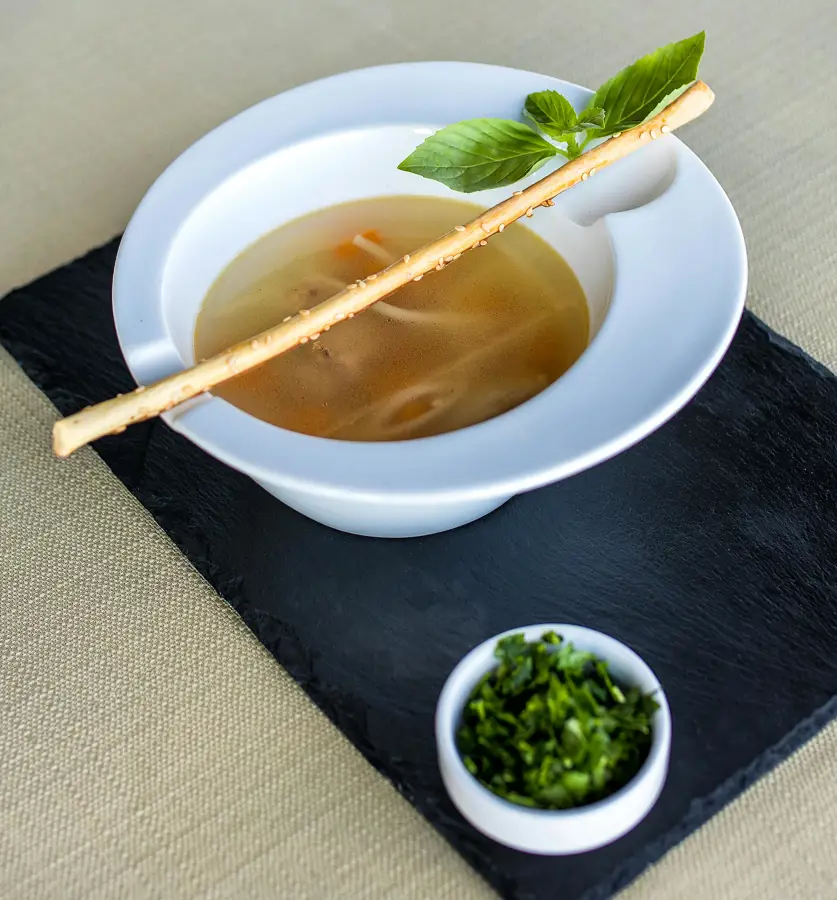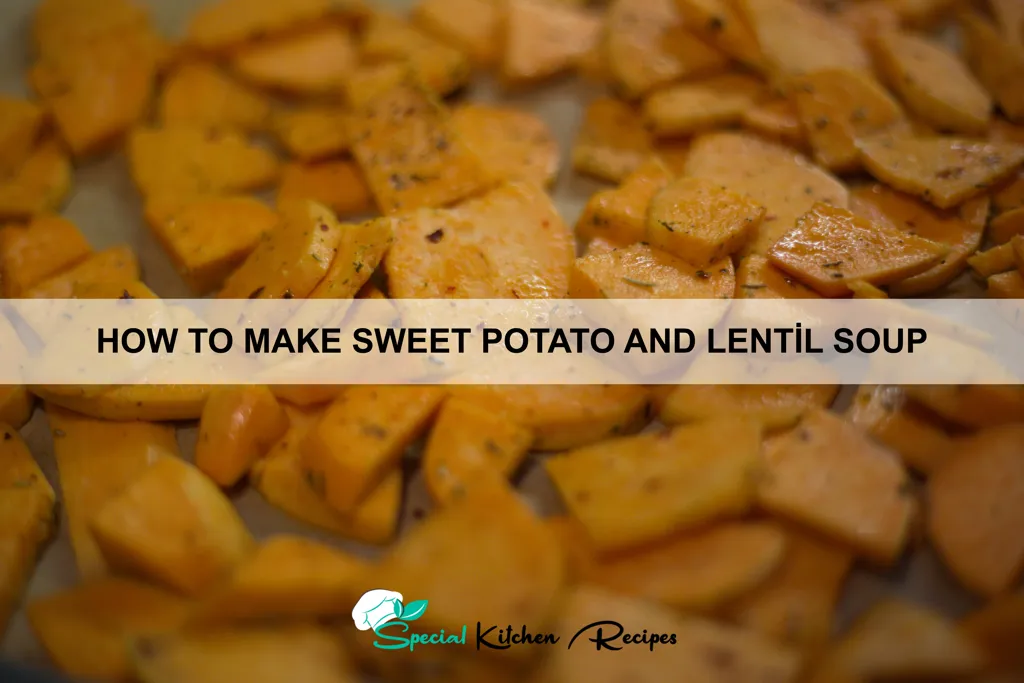Creamy mushroom soup, a culinary comfort enjoyed globally, boasts a surprisingly rich and varied history. While pinpointing its exact origin is difficult, evidence suggests variations existed for centuries. Ancient Roman texts mention mushroom-based dishes, hinting at early forms of the soup. However, the creamy, decadent version we know today likely emerged during the medieval period or later, with the rise of readily available dairy products and sophisticated culinary techniques in Europe. The development of the roux, a crucial element in thickening the soup, played a significant role in transforming simple mushroom broth into the luxurious texture we associate with this dish.
The soup’s popularity flourished with the rise of French cuisine, where it became a staple in elegant restaurants and home kitchens alike. France, in particular, is often credited with refining and popularizing the creamy mushroom soup recipe we recognize today, often featuring a delicate balance of earthy mushrooms, rich cream, and aromatic herbs. Its journey from humble beginnings to a global favorite is a testament to its adaptability and deliciousness. Interestingly, the global mushroom market is a multi-billion dollar industry, highlighting the widespread appreciation for this ingredient. In the United States alone, annual mushroom consumption exceeds 1.5 pounds per person, showcasing the ongoing popularity of mushrooms in diverse culinary applications.
Beyond its culinary appeal, creamy mushroom soup holds cultural significance in various societies. It frequently appears in holiday celebrations and family gatherings, symbolizing warmth, comfort, and togetherness. Many cultures have their own unique variations, reflecting regional preferences and available ingredients. For example, some recipes incorporate sherry or other alcoholic beverages for added depth of flavor, while others highlight specific types of mushrooms, like the earthy porcini or the delicate oyster mushroom. Its versatility and enduring appeal ensure its continued presence on menus worldwide, a testament to its enduring charm and deliciousness.
Ingredients and Measurements
This recipe yields approximately 6 servings of rich and creamy mushroom soup. Accuracy in measurement is key to achieving the perfect consistency and flavor balance, so please use a kitchen scale for the most precise results, especially for the mushrooms and butter.
Mushrooms: 1 pound (450g) of cremini mushrooms are recommended for their earthy flavor and robust texture. However, feel free to experiment! A mix of cremini, shiitake, and oyster mushrooms would add delightful complexity. Ensure your mushrooms are cleaned thoroughly; wiping them with a damp cloth is preferable to washing them under running water, as this can make them soggy. If using larger mushrooms, slice them into roughly 1/2-inch thick pieces for even cooking. Smaller mushrooms can be halved or left whole.
Aromatics: We’ll be using 1 medium yellow onion (approximately 1 cup chopped), 2 cloves of garlic (minced), and 2 tablespoons of fresh thyme leaves (or 2 teaspoons of dried thyme). The onion provides a sweet base, the garlic adds pungent depth, and the thyme contributes a subtle herbal note that beautifully complements the mushrooms. Finely chopping the onion and mincing the garlic ensures even cooking and prevents large chunks from dominating the texture of the soup.
Dairy: For a luxuriously creamy soup, we’ll use 2 cups (475ml) of heavy cream and 1 cup (240ml) of whole milk. Heavy cream is crucial for achieving that rich, velvety texture. You can substitute with half-and-half, but the creaminess will be slightly reduced. Whole milk adds body and prevents the soup from becoming too heavy.
Flavor Enhancers: To enhance the savory notes, we’ll incorporate 4 tablespoons (60g) of unsalted butter, 1 teaspoon of salt, and 1/2 teaspoon of freshly ground black pepper. Using unsalted butter allows you to control the saltiness of your soup. Adjust the salt to your taste preference after tasting the soup before serving.
Broth: 4 cups (950ml) of chicken or vegetable broth forms the base of the soup. Choose a high-quality broth for the best flavor. Homemade broth is ideal, but store-bought low-sodium broth works well too.
Optional Garnishes: Consider fresh parsley, chives, or a drizzle of truffle oil for an elegant finishing touch. A swirl of crème fraîche also adds a delightful tangy contrast.
Mise en Place (Preparation of Ingredients)
Before you even begin heating your pot, meticulous preparation is key to a smooth and successful creamy mushroom soup. This mise en place – French for everything in its place – will significantly improve your efficiency and the final quality of your soup. We’ll be making enough for 4 generous servings.
Mushrooms: Start with 1 pound of cremini mushrooms (or a mix of cremini, shiitake, and oyster for a more complex flavor). Thoroughly clean the mushrooms with a damp paper towel or mushroom brush. Avoid rinsing them under running water, as they will absorb too much moisture, resulting in a watery soup. Slice the mushrooms relatively uniformly – about 1/4 inch thick – for even cooking. Larger pieces can be halved or quartered.
Aromatics: Finely chop 1 medium yellow onion and 2 cloves of garlic. The finer the chop, the more evenly they’ll cook and infuse their flavor into the soup. A good rule of thumb is to aim for a dice of about 1/8 inch. For a deeper flavor profile, consider adding a sprig of fresh thyme or a few sprigs of rosemary. Remove the leaves from the stems before adding them to the soup.
Liquids & Dairy: Measure out 4 cups of good quality chicken or vegetable broth. Warm broth will speed up the cooking process. Have 1 cup of heavy cream ready. Using heavy cream is crucial for achieving the desired creamy texture. Half-and-half or milk will result in a thinner soup. You can also add a splash of dry white wine (about 1/4 cup) for extra depth of flavor (optional).
Other Ingredients: Gather 2 tablespoons of unsalted butter, 2 tablespoons of all-purpose flour (for a roux, which helps thicken the soup), and salt and freshly ground black pepper to taste. Have your salt and pepper readily available to season the soup at various stages of cooking. Prepare a small bowl for discarded mushroom stems (if using whole mushrooms) and another for the thyme/rosemary stems (if used). This ensures a clean final product.
Important Note: Once you’ve completed your mise en place, ensure all your ingredients are within easy reach. This will streamline your cooking process and prevent unnecessary interruptions. Having everything prepped ahead of time minimizes stress and allows you to focus on the cooking techniques.
Sautéing the Mushrooms
Sautéing the mushrooms is a crucial step in developing deep, rich flavor in your creamy mushroom soup. Proper technique ensures the mushrooms release their moisture, brown beautifully, and contribute a complex umami note to the final dish. We’ll be using 1 pound (450g) of cremini mushrooms, but feel free to experiment with a mix of varieties like shiitake or oyster mushrooms for added depth.
Begin by cleaning your mushrooms. Do not wash them under running water, as this will soak them and make them watery. Instead, use a damp paper towel or a mushroom brush to gently wipe off any dirt or debris. Then, slice the mushrooms. For a more rustic soup, slice them thicker (about 1/4 inch or 6mm). For a smoother, creamier texture, slice them thinner (about 1/8 inch or 3mm).
Heat 2 tablespoons of unsalted butter and 1 tablespoon of olive oil in a large, heavy-bottomed pot or Dutch oven over medium-high heat. The combination of butter and oil prevents the butter from burning and contributes to a richer flavor profile. Once the butter is melted and foamy, add the sliced mushrooms in a single layer, being careful not to overcrowd the pan. Overcrowding will result in steaming instead of sautéing, leading to mushy mushrooms.
Let the mushrooms cook undisturbed for about 3-5 minutes, allowing them to brown nicely on one side. This browning process is essential for developing flavor. Resist the urge to stir too frequently during this initial phase. Once the bottom is nicely browned, use a spatula to gently flip the mushrooms. Continue sautéing, stirring occasionally, until all the mushrooms are golden brown and have released most of their moisture, about 8-10 minutes total. This should leave you with a nicely browned, slightly reduced mixture.
Seasoning the mushrooms during sautéing is key. Once they’re nicely browned, add a generous pinch of salt and freshly ground black pepper. About 1 teaspoon of salt and 1/2 teaspoon of black pepper should suffice. Feel free to add a pinch of garlic powder or onion powder for an extra layer of flavor. Continue to cook for another minute or two to allow the seasonings to meld with the mushrooms.
Once the mushrooms are perfectly sautéed, set them aside in a bowl. The pot, now infused with delicious mushroom flavor, is ready for the next steps in creating your creamy mushroom soup.
Making the Creamy Base
The foundation of a truly exceptional creamy mushroom soup lies in building a rich and flavorful base. This step requires careful attention to detail and technique to achieve the desired velvety texture.
Begin by melting 4 tablespoons (1/2 stick) of unsalted butter in a large, heavy-bottomed pot or Dutch oven over medium heat. A heavy pot helps to prevent scorching and ensures even cooking. Avoid using high heat, as this can lead to burning the butter before the mushrooms are properly sautéed.
Once the butter is melted and shimmering, add 1 pound of cremini mushrooms, sliced. Cremini mushrooms offer a deep, earthy flavor ideal for this soup, but feel free to experiment with other varieties like shiitake or oyster mushrooms for added complexity. Sauté the mushrooms for 8-10 minutes, stirring occasionally, until they release their moisture and begin to brown. Don’t overcrowd the pot; if necessary, work in batches to ensure even browning.
Next, add 1 medium yellow onion, finely chopped, and 2 cloves of garlic, minced, to the pot. Continue to sauté for another 5-7 minutes, until the onion is softened and translucent. The garlic should be fragrant but not browned. Overcooking garlic can impart a bitter taste.
Now, it’s time to build the creamy foundation. Sprinkle 1/4 cup of all-purpose flour over the mushroom and onion mixture. Whisk constantly for 1-2 minutes to create a roux. This step is crucial for thickening the soup and creating a smooth, creamy texture. Ensure the flour is fully incorporated and cooked, removing any raw flour taste.
Gradually whisk in 4 cups of chicken broth (or vegetable broth for a vegetarian option). Start with a small amount, whisking continuously to prevent lumps from forming. Continue adding the broth until it’s fully incorporated and the mixture is smooth. Bring the mixture to a simmer, reduce the heat to low, and cook for 10-15 minutes, stirring occasionally, allowing the flavors to meld and the soup to thicken.
Season generously with salt and freshly ground black pepper to taste. At this stage, you can also add other seasonings to enhance the flavor profile, such as a pinch of thyme, rosemary, or a bay leaf. Remember to taste and adjust seasoning as needed throughout the process.
This creamy base is now ready for the final steps, where we’ll add the cream and finish the soup to perfection.
Simmering and Seasoning
Once you’ve sautéed your mushrooms (as detailed in the previous section), it’s time to build the flavor foundation of your creamy mushroom soup. This involves simmering the mushrooms in a flavorful broth and carefully seasoning to perfection. Begin by adding 4 cups of vegetable broth (or chicken broth for a richer flavor) to the pot containing the sautéed mushrooms. Scrape the bottom of the pot well to lift any browned bits from the mushrooms; these little nuggets of deliciousness contribute significantly to the overall depth of flavor.
Bring the mixture to a gentle simmer over medium heat. A simmer is characterized by small, gentle bubbles rising to the surface – not a rolling boil. Avoid vigorous boiling, as this can make the soup muddy and reduce the creaminess. Let the mixture simmer for 15-20 minutes, allowing the mushrooms to soften further and the flavors to meld beautifully. This slow cooking process is crucial for developing a rich and complex taste.
While the soup simmers, it’s time to season. Taste the soup frequently and adjust the seasoning as needed. Start with 1 teaspoon of salt and 1/2 teaspoon of black pepper. These are base seasonings; you can adjust them according to your taste preferences. Consider adding a pinch of nutmeg (about 1/4 teaspoon) for a warm, earthy note that complements mushrooms beautifully. A dash of dried thyme (about 1/4 teaspoon) can also add wonderful complexity. Don’t be afraid to experiment! A touch of garlic powder or onion powder can enhance the savory element.
Professional Tip: For a truly luxurious mushroom soup, consider adding a splash of dry sherry or white wine (about 1/4 cup) during the simmering process. This will add a subtle depth of flavor and complexity that elevates the soup to another level. Allow the alcohol to cook off for a few minutes before proceeding.
Once the soup has simmered for the allotted time and you’ve achieved your desired seasoning, you’re ready to move on to the next crucial step: creating that luscious creaminess. Remember, patience and careful seasoning are key to achieving a truly exceptional creamy mushroom soup.
Blending (Optional)
While not strictly necessary, blending your creamy mushroom soup elevates its texture to a luxuriously smooth consistency. This step is particularly beneficial if you prefer a completely lump-free soup or if you’ve used mushrooms with a slightly tougher texture. However, keep in mind that blending can slightly alter the soup’s overall flavor profile, potentially making it a bit less intensely mushroomy.
Choosing your method: You have two primary options for blending: using an immersion blender directly in the pot or transferring the soup to a regular blender. An immersion blender (also known as a stick blender) is the most convenient option, minimizing cleanup and reducing the risk of splattering. A regular blender offers more control over the texture but requires careful handling, especially with hot liquids.
Immersion Blender Method: Carefully submerge the immersion blender into the hot soup, ensuring it’s fully immersed before turning it on. Start on a low setting and gradually increase the speed to achieve your desired consistency. Work in stages, pulsing the blender and pausing to scrape down the sides of the pot as needed. This prevents the blender from becoming overloaded and ensures even blending. Blend until completely smooth, or leave some texture for a slightly chunkier soup.
Regular Blender Method: Caution: Hot liquids can cause pressure to build up and lead to burns or explosions inside a regular blender. To avoid this, allow the soup to cool slightly before transferring it to the blender. Work in batches if necessary, filling the blender no more than halfway. Secure the lid tightly and vent any steam by covering the opening with a kitchen towel. Blend in short bursts, pausing to vent the steam as needed, until you reach your desired consistency. Always use caution when blending hot liquids.
Adjusting the consistency: If the soup is too thick after blending, you can thin it by adding a little more broth or cream, a tablespoon at a time, until you achieve the desired consistency. Conversely, if it’s too thin, you can simmer it uncovered for a few minutes to reduce the liquid. Taste and adjust seasoning after blending, as the process can subtly alter the flavor balance.
Recommendations: For the richest, creamiest texture, blend the soup after the mushrooms have cooked thoroughly and the cream has been incorporated. This ensures a smooth, velvety texture without compromising the depth of flavor. If you’re using a regular blender, consider using a tamper to push down ingredients and prevent them from getting stuck at the top of the blade. Remember to always prioritize safety when handling hot liquids and sharp blades.
Recommendations
For the creamiest mushroom soup, use a combination of cremini, shiitake, and oyster mushrooms for a depth of flavor and texture. Don’t be afraid to experiment with different types of mushrooms based on your preference and availability. Consider adding a splash of dry sherry or white wine towards the end of cooking for an extra layer of complexity. Adjust the seasoning to your taste; a pinch of nutmeg or a dash of Worcestershire sauce can elevate the flavor profile significantly.
Serving suggestions are plentiful! This soup is delicious served hot with a crusty baguette, grilled cheese sandwich, or a simple salad. A dollop of crème fraîche or a sprinkle of fresh parsley adds a beautiful finishing touch. For a heartier meal, consider adding cooked chicken, sausage, or even lentils to the soup. For a vegetarian option, roasted vegetables like butternut squash or carrots would be a delicious addition.
Storage: Leftover mushroom soup can be stored in an airtight container in the refrigerator for up to 3 days. Allow the soup to cool completely before refrigerating to prevent bacterial growth. You can also freeze the soup for up to 3 months. To freeze, allow the soup to cool completely, then pour into freezer-safe containers, leaving some headspace for expansion.
Nutritional Information (per serving, approximate): Calories: Around 250-300 (depending on ingredients and portion size). This will vary greatly depending on the type and amount of cream used. Fat: Moderate, primarily from the cream and mushrooms. Protein: Moderate, primarily from the mushrooms and any added protein sources. This soup is a good source of fiber and vitamins, particularly B vitamins found in mushrooms. Note: This is an approximation and the exact nutritional content will depend on the specific ingredients and quantities used.
Complementary Dishes: This creamy mushroom soup pairs wonderfully with dishes that offer contrasting textures and flavors. A simple green salad with a vinaigrette dressing provides a refreshing contrast to the richness of the soup. Grilled chicken or fish would also complement the soup, offering a lighter protein option. For a more substantial meal, serve it alongside a roasted vegetable medley or a hearty grain salad.
Important Note: Always ensure your mushrooms are thoroughly cleaned before cooking. If you are using wild mushrooms, ensure they have been properly identified by an expert to avoid any potential toxicity.





